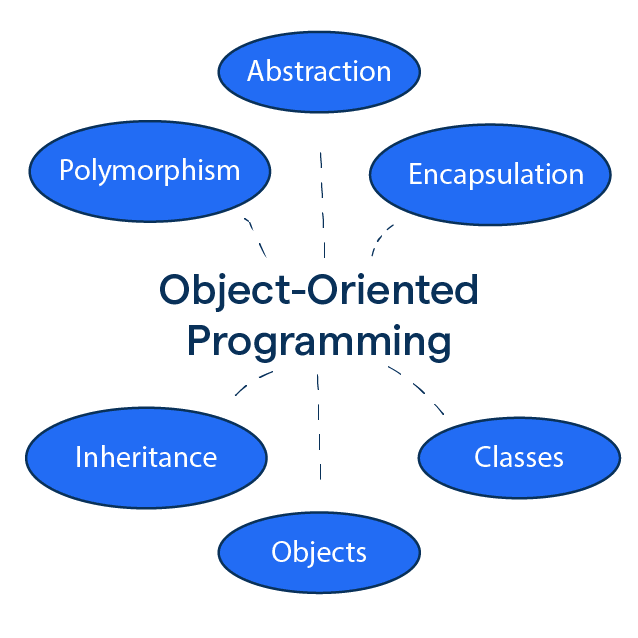Object-Oriented Programming
(2025-08-17T05:01.570Z)
Perplexity Query
(2025-08-17T05:01
.570Z)
Question:
Write a comprehensive one-page article about "Object-Oriented Programming".
Response from sonar-pro:
Object-Oriented Programming (OOP) is a programming paradigm built around the concept of “objects”—self-contained units that bundle together data and the functions that operate on that data.
[yb7soc]
[lt9oi1]
This approach has become a cornerstone of modern software development because it makes code more modular, maintainable, and scalable, making it possible to manage the growing complexity of contemporary applications.
[46vl17]
[yb7soc]
OOP matters because it provides a practical and organized way to break down complex systems, enabling teams to collaborate efficiently and maintain large codebases over time.
[yb7soc]
Today, OOP underpins technologies from business software to mobile apps, shaping how digital solutions are architected in almost every industry.
[46vl17]

Main Content
At the heart of OOP are four key principles: encapsulation, abstraction, inheritance, and polymorphism.
[lt9oi1]
- Encapsulation means packaging an object’s data and the methods that modify it together, shielding the internal workings from outside interference. [lt9oi1]
- Abstraction hides underlying complexity, exposing only what is necessary to interact with the object. [lt9oi1]
- Polymorphism enables objects to interact with each other through a shared interface, allowing functions to process objects differently depending on their specific types. [lt9oi1]
Practical Examples and Use Cases
OOP is instrumental in building e-commerce systems, where classes might represent entities such as customers, products, and orders—each with their attributes (e.g., price, description) and behaviors (e.g., make purchase, add to cart).
[pefi4e]
[lt9oi1]
In social media applications, user profiles can be built as objects encapsulating user data and methods for interacting with the platform, such as posting or messaging.
[pefi4e]
Smart home software, gaming engines, and financial systems are other common domains where OOP simplifies development and future enhancements.
[pefi4e]
[lt9oi1]
Benefits and Applications
Key benefits of OOP include:
OOP also streamlines team collaboration, allowing developers to work independently on different program modules by cleanly separating responsibilities.
[yb7soc]
Challenges and Considerations
While OOP greatly benefits complex, large-scale applications, it can introduce unnecessary overhead for simple projects. Designing a coherent object model requires careful planning, and misuse—such as creating too many classes—may lead to over-complication. Developers new to OOP may also face a steeper learning curve compared to procedural programming.
[lt9oi1]
[yb7soc]

Current State and Trends
OOP is widely adopted in modern programming, forming the foundation of popular languages like Java, Python, C++, and C#.
[yb7soc]
[46vl17]
It dominates fields such as web development, game design, enterprise systems, and embedded solutions. Major software providers—including tech giants like Microsoft, Oracle, and Google—rely heavily on OOP principles for their applications and frameworks.
[yb7soc]
[46vl17]
Recent innovations focus on integrating OOP with other paradigms, such as functional programming, to combine structured modeling with conciseness and robust data handling. Languages like Python and Kotlin showcase this blending, and emerging software architectures (such as microservices) are increasingly designed with OOP principles.
[46vl17]
[lt9oi1]

Future Outlook
As software increases in complexity, the value of OOP in managing large-scale codebases is only expected to grow. Trends point toward more hybrid paradigms—melding OOP with declarative, functional, and event-driven programming—for even greater flexibility and efficiency. With the rise of AI, the Internet of Things, and autonomous systems, OOP will likely serve as a foundational architectural approach for new tools and technologies, further shaping the digital landscape.
[lt9oi1]
[46vl17]
In summary, Object-Oriented Programming underpins countless modern technologies by organizing code into modular, reusable, and easily maintained units. Its influence will remain strong as software evolves, driving innovation and adaptability in an ever-changing digital world.
Citations
[pefi4e] 2025, Jun 09. Basics of Object-Oriented Programming: Core Concepts .... Published: 2024-09-16 | Updated: 2025-06-09
[46vl17] 2025, Jun 16. What is Object-Oriented Programming? Definition, Pros, .... Published: 2024-09-24 | Updated: 2025-06-16
[xpaqg6] 2025, Aug 14. Understanding Object-Oriented Programming (OOPs) .... Published: 2023-11-16 | Updated: 2025-08-14
[yb7soc] 2025, Jun 16. What is Object-Oriented Programming (OOP)?. Published: 2024-06-14 | Updated: 2025-06-16
[lt9oi1] 2025, Jun 15. Object-Oriented Programming Languages: Concept .... Published: 2025-03-14 | Updated: 2025-06-15